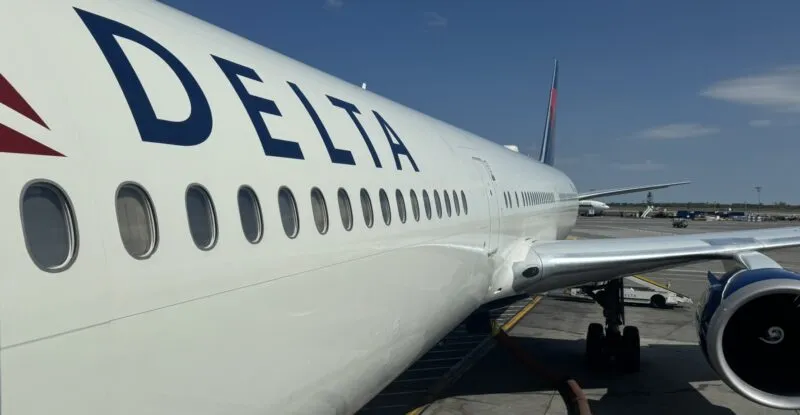 Having flown Delta more than any other airline in the world by a fairly wide margin, I sometimes struggle to differentiate the experience between multiple flights. Delta has gotten so good at being consistent, however, that it becomes that much easier to spot the cracks forming in the armor.
Having flown Delta more than any other airline in the world by a fairly wide margin, I sometimes struggle to differentiate the experience between multiple flights. Delta has gotten so good at being consistent, however, that it becomes that much easier to spot the cracks forming in the armor.
Before I even purchased my economy class flight from New York JFK to Los Angeles LAX, I stopped to admire the #AvGeek flight numbers someone at Delta had assigned: DL767, 747, 752, 738, 707. These are the kind of flight numbers that even an Airbus diehard fan can appreciate.
My flight was aboard the venerable 767-400ER.
On the day before my flight I checked in using the Delta iOS app, which hasn’t been meaningfully redesigned in many years. It’s a bit clunky, tends to bury some features if they exist at all (like the ability to add oneself to a standby list), and pales in comparison to main competitor United’s app.
It got the job done, though, and provided my boarding pass and plenty of prompt push notifications around boarding time.

I lined up as part of boarding Group 5, the first of Delta’s non-Sky Priority group. This being a super-premium route meant that at least half the passengers boarded before I did.
I watched as a gate agent greeted every passenger by their name and airline status, a noticeable and nice touch that made the brief interaction much more personal.
The 767 cannot be beat for passenger comfort in economy class given its 2-3-2 layout.
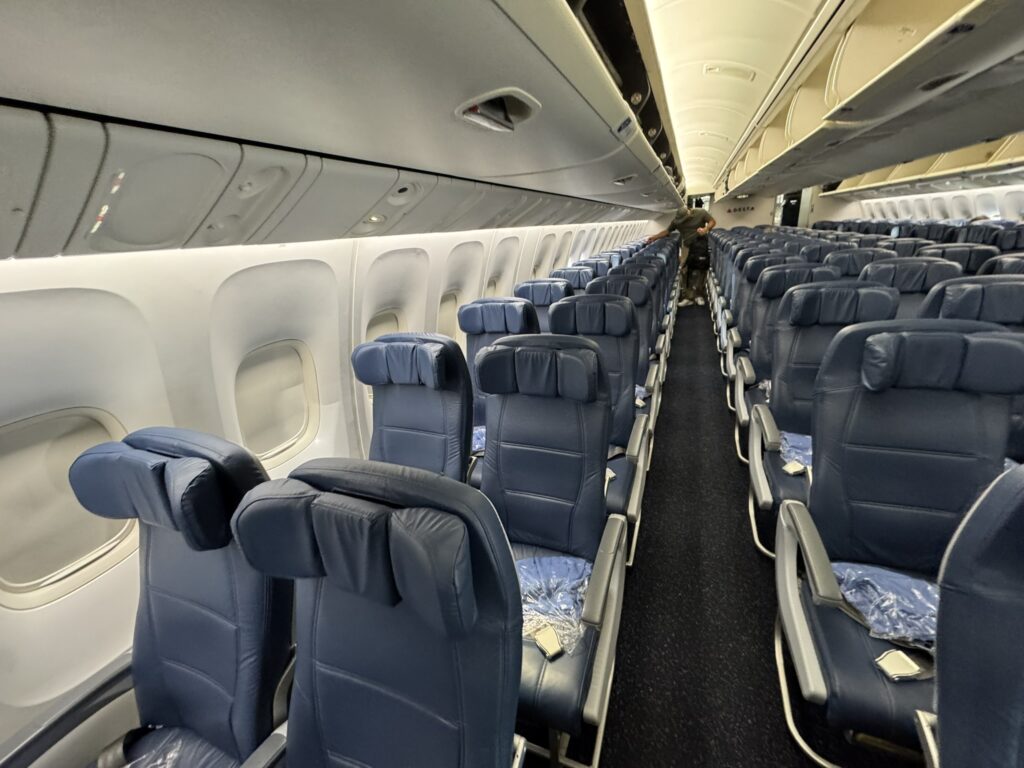
I was happy to sit just about anywhere but settled into my aisle seat on the window side.
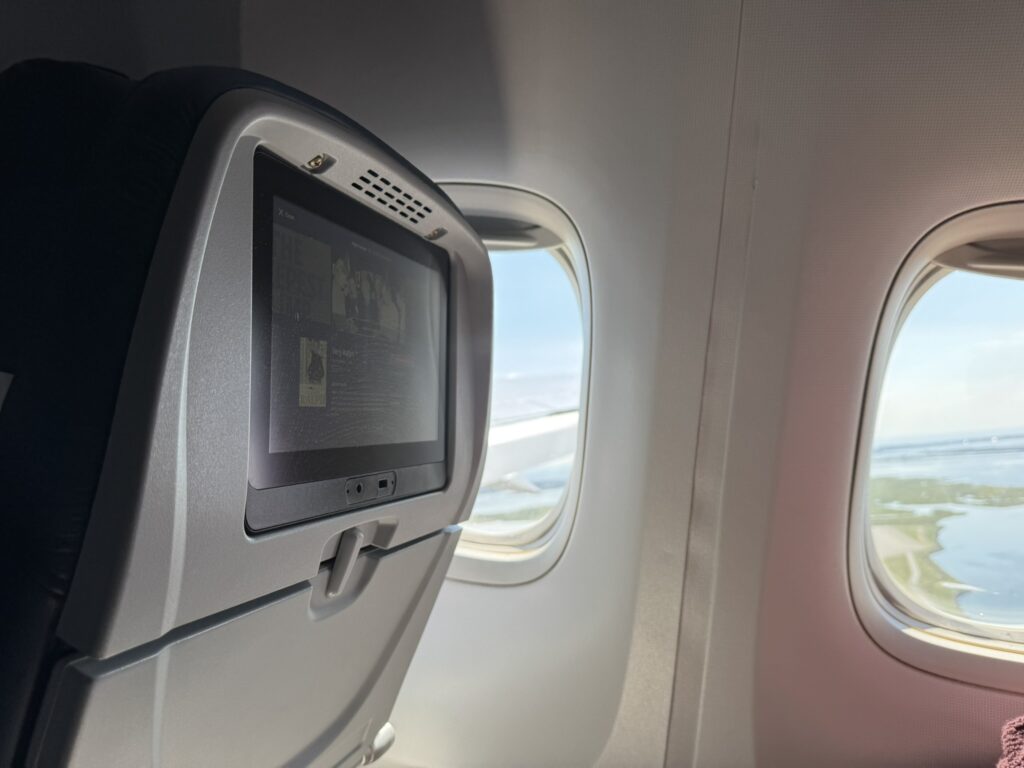
For an economy class seat on a longhaul-configured aircraft (flying domestic) this is about as good as it gets. There is plenty of seat pitch and width, a sturdy headrest with movable wings, and decent recline.

The 767-400ER is equipped with Delta’s ill-fated attempt at a home-brewed IFE system via its subsidiary Delta Flight Products. While the hardware was installed on a few subfleets, Delta Flight Products threw in the towel on the product before making much headway.
Even though this is Delta’s in-house IFE system, it still hasn’t received the swish Delta Sync interface. If a passenger had saved or started content on a prior flight it would not be presented to them to continue watching on this flight.
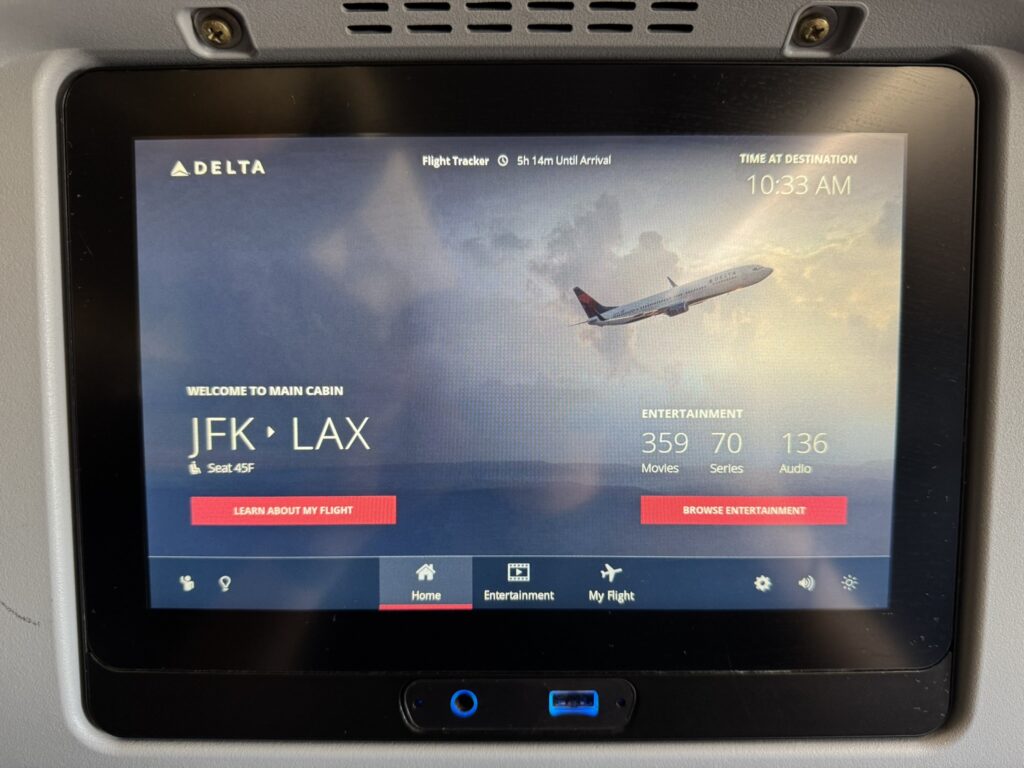
Delta has still not enabled Bluetooth audio on its system despite the fact that the hardware has been tested in first class on the Airbus A321 for ages. Even United manages to enable Bluetooth on legacy Panasonic hardware.

While the IFE hardware may not be the best, with its chunky bezels and a lone USB-A port, the interface was quick and advertised a total of 359 movies!
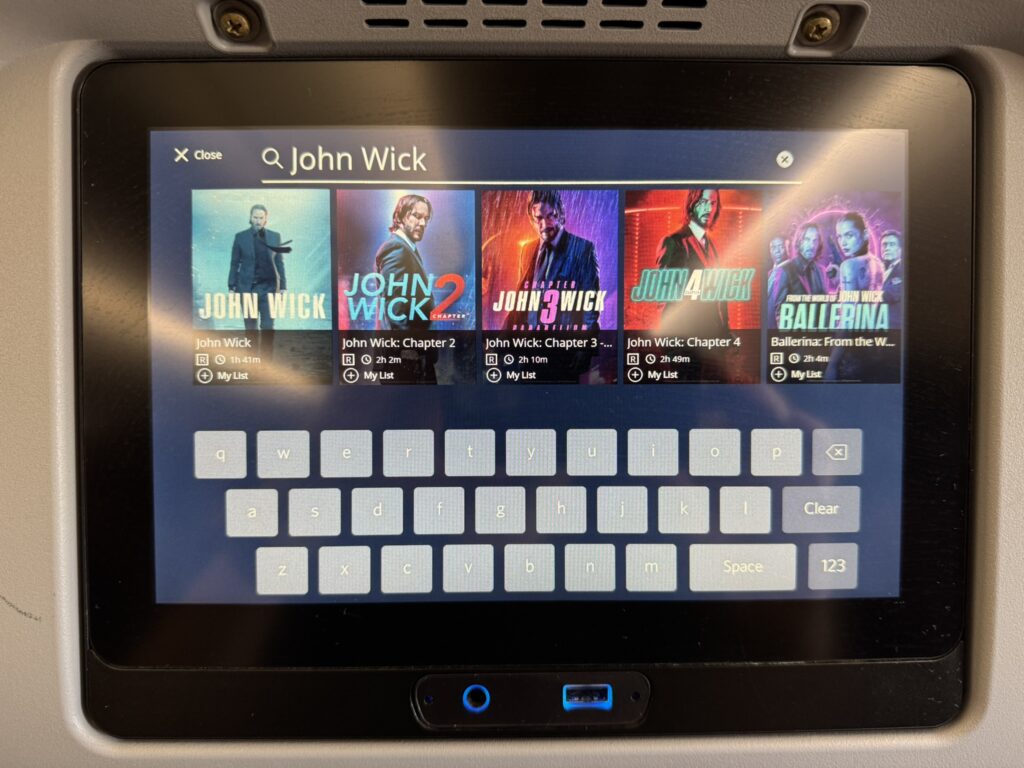
As usual with Delta, I found plenty to watch and very much appreciated seeing entire movie catalogs including every John Wick movie and even a documentary which I had never seen before.

Also per usual, when flying Delta domestic economy in this post-COVID world, I ate before the flight because I knew Delta’s options for fresh food would be extremely limited.
I’m not sure if the carrier’s now infamous chicken salad croissant sandwich was still available by my row, but I settled for a bag of sun chips and Biscoff cookies and a new snack mix served during the second service.

I will never understand how Delta’s domestic economy catering fell so far after the pandemic, and never meaningfully rebounded. If Alaska and United can offer a multitude of options and the ability to pre-order to secure availability, why can’t Delta? Heck, even American offers a free meal on this premium route.
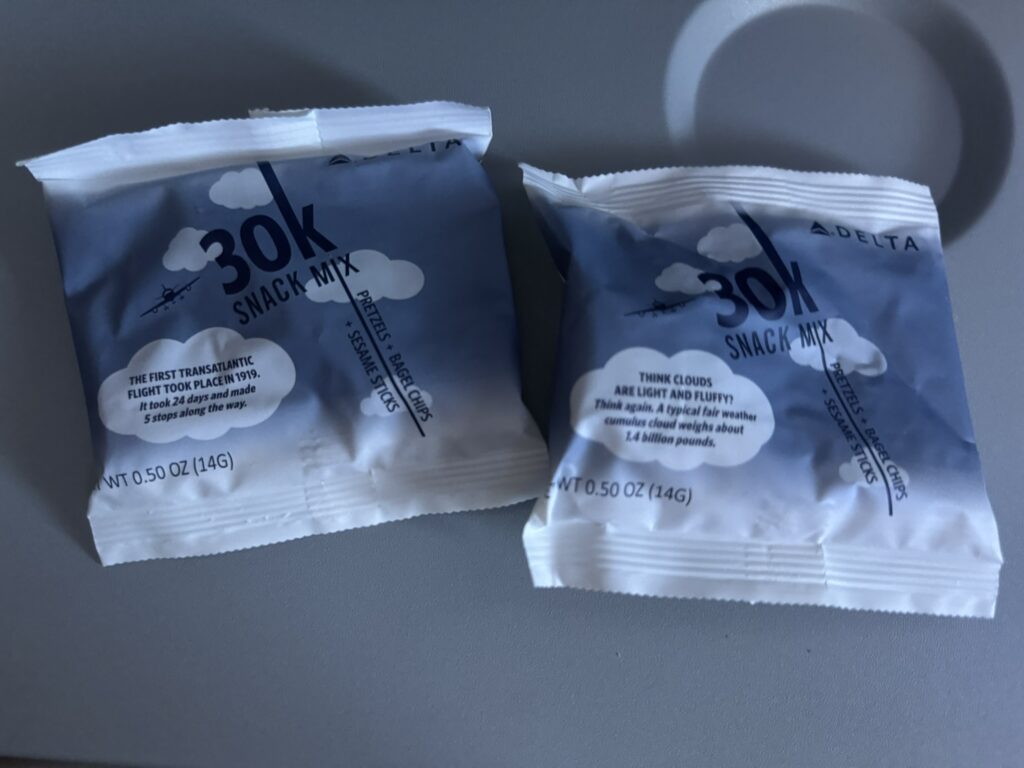
Coffee and water were offered in spades, however, including between the main services and seemingly every 30 minutes or so while we were in flight. This kind of ever-present service is what really sets Delta apart from the competition.
Delta has offered free Wi-Fi for SkyMiles members for about a year and a half, and while free is a great price point, it was clear on this flight that connectivity partner Viasat is struggling to keep up with demand.
Download data speeds were sluggish but acceptable for standard definition streaming, while upload speeds were in the sub-megabit range.
Latency spiked over the heartland and after some complaints by fellow passengers the inflight Wi-Fi system was rebooted. The reboot helped a little bit, but until ViaSat-3 F2 is delivering service over the Americas, Delta is going to be hard pressed to offer a quality, consistent service to passengers.
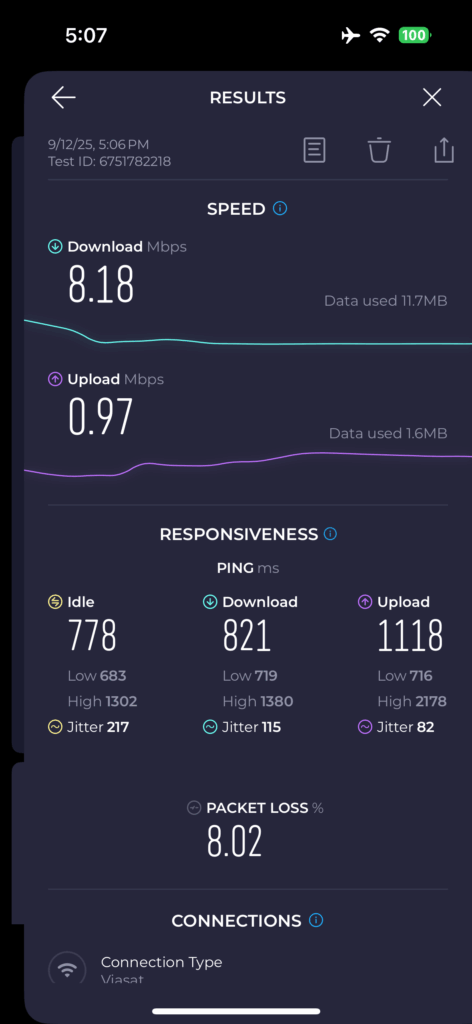
The overall Delta experience is overwhelmingly positive. But for an airline that is often touted as the best, it’s hard not to notice the mounting little things, like an app that’s falling behind the competition, the lack of Bluetooth audio, lackluster catering, outdated USB-A ports and an over-stretched IFC system.
Given the incredible number of very premium passengers Delta welcomed on board, maybe I’m being too picky and set my expectations too high. But this is multi-award-winning Delta after all, so I’m going to expect the best of everything.

Related Articles:
- How Delta Sync seatback demonstrably improves PaxEx
- VIDEO: Delta innovates with Hughes partnership, IFEC integration
- American versus Delta on New York-DC aboard E175 twinjets
- Delta deserves continued PaxEx props for consistency
All images credited to the author, Jason Rabinowitz




